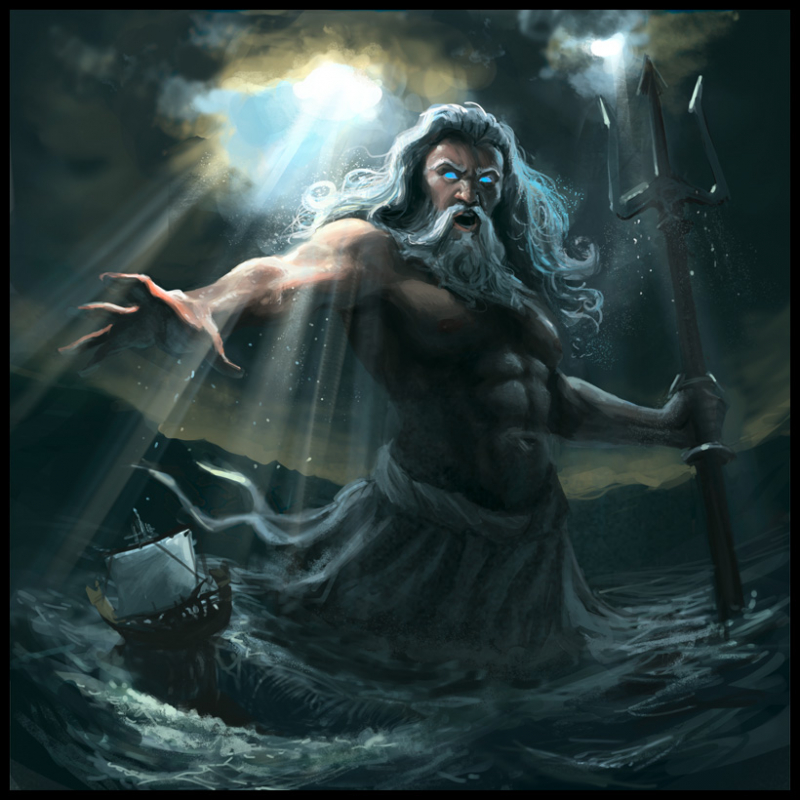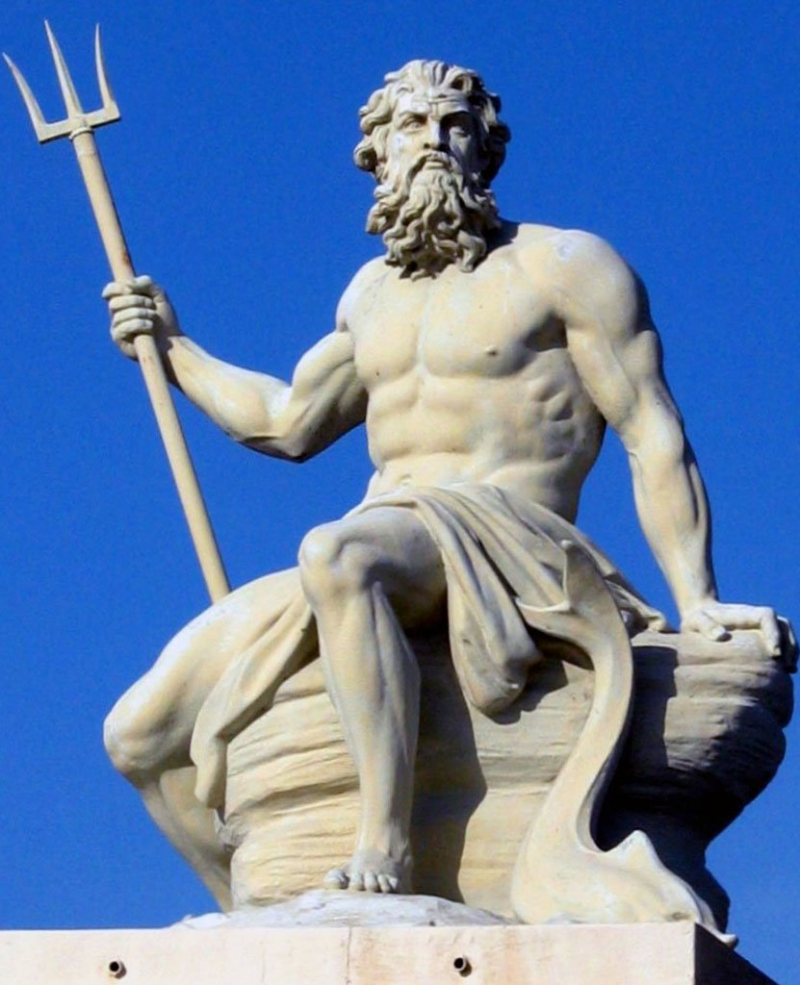Poseidon - Greek god of the sea
Sailors would pray to Poseidon before journeys in order to assure safe passage since, like Zeus, Poseidon's fury controlled the waves.
The significance of Poseidon's name is unknown to us because it is very old. Both "husband of the earth" and "lord of the seas" have been proposed as translations by different authors. It is considerably less plausible that it signifies "knower of many things," as Plato claims. Poseidon is only recognized as a sea deity now, although he may have also served as the supreme god of the sky, the god of the land and fertility, or possibly both. In fact, Zeus, a distinguished, bearded guy with thick, curling hair and piercing eyes, often resembles him in depictions. According to Homer, his scream was louder than all ten thousand men put together.
He is frequently seen riding a four-horse chariot and dodging waves while brandishing a trident. Though his son Triton also wears one, the trident is his most known symbol. It is supposed that Skyphios, the first horse, was made when Poseidon used his trident to strike a rock. The Giant Polybotes were interred beneath a chunk of the island Kos that had been broken off by the god during the Gigantomachy. Today's island Nisyros was created from this fragment.
The Ancient Greeks used a number of epithets to characterize Poseidon's manifestations and to pray to him since he had diverse abilities. He was the "Savior of Sailors" to some and the "Averter of Earthquakes" to others. However, to a third and fourth group, respectively, he was revered as "The Creator and Tamer of Horses" and "The Leader of Nymphs."








